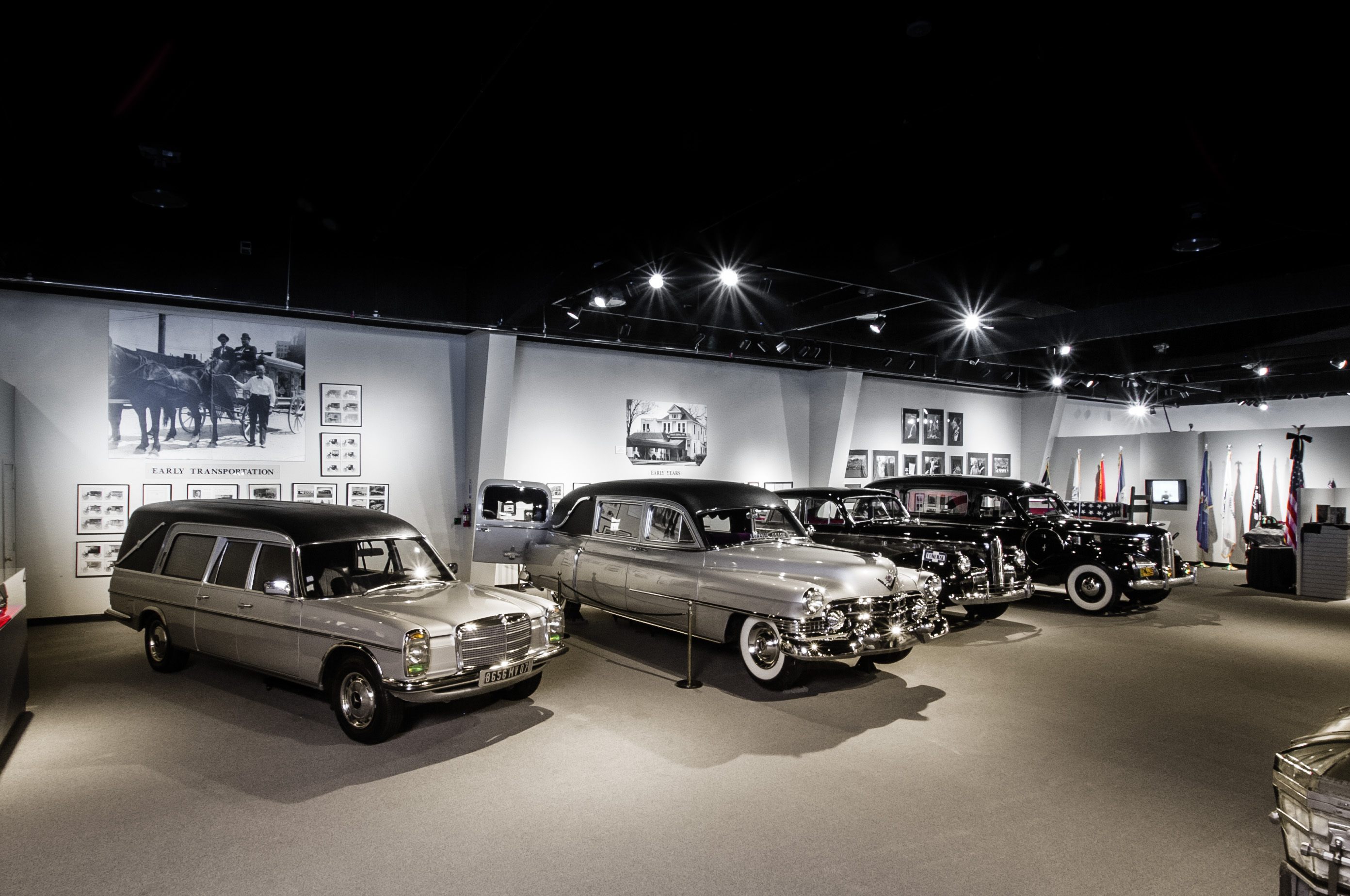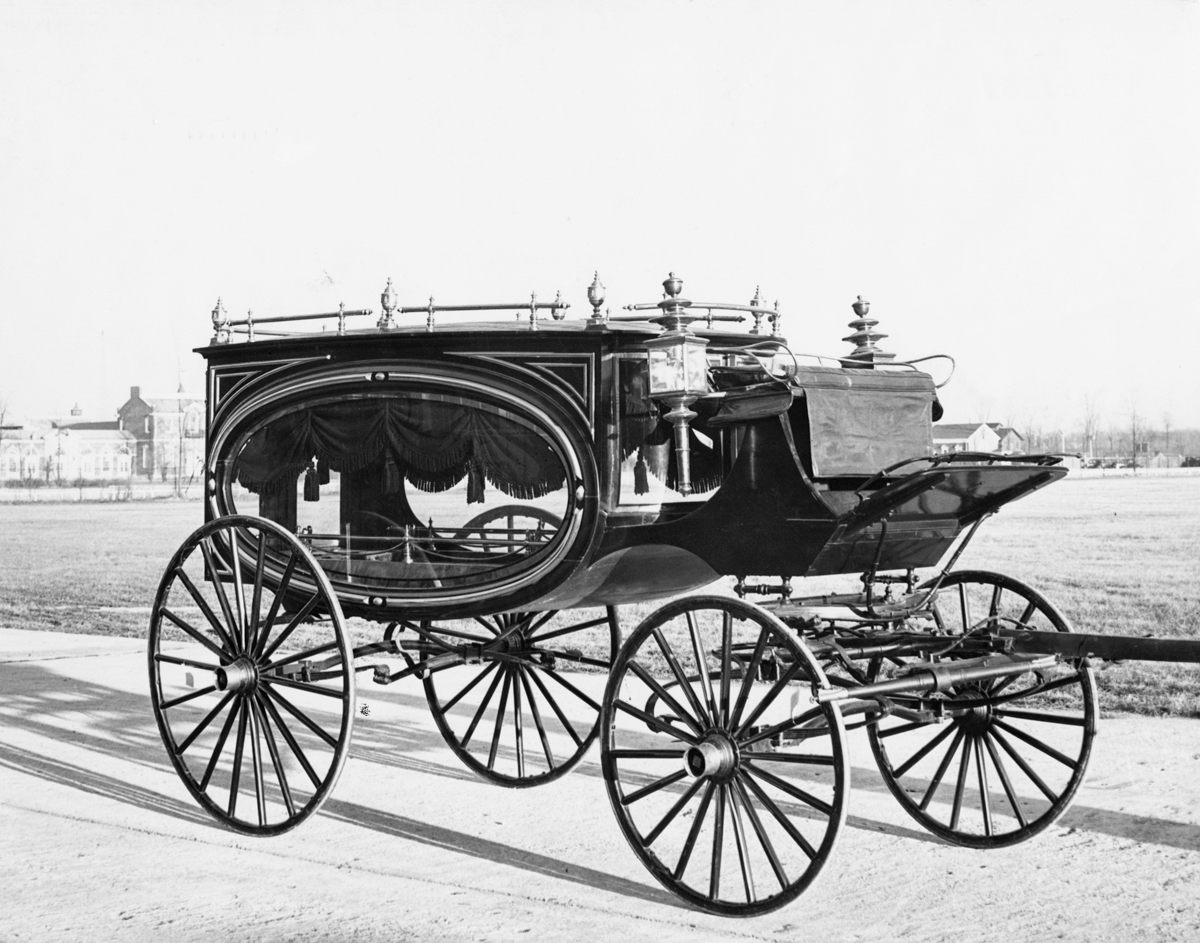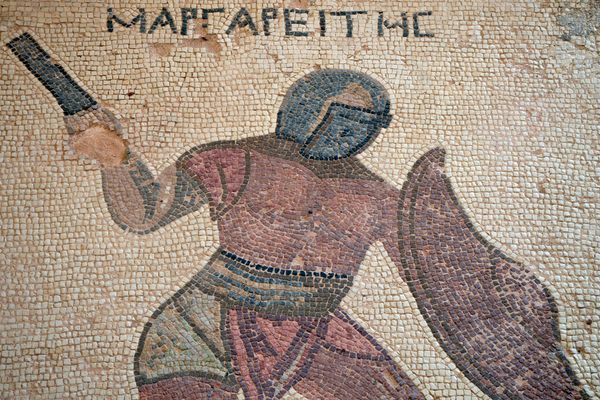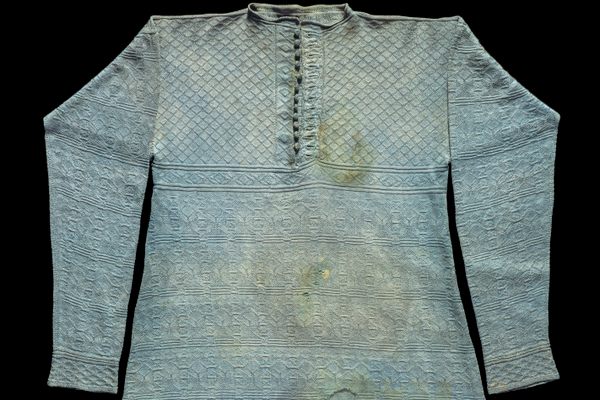The Curious Afterlives of Hearses
When they no longer carry caskets, some of these vehicles end up in museums—or even pawn shops.

On April 5, 1968, a cream-colored hearse pulled up next to a plane on a Memphis tarmac. The crowd pressed close around the wings didn’t make much room—milling mourners, newspeople, and police officers stepped back just enough to allow the vehicle’s rear doors to open. When they did, a few men removed a coffin carrying the body of Martin Luther King Jr. and placed it onto the plane, bound for services in Atlanta.
In the tragedy that unfolded slowly in the hours and days after King was fatally shot at the Lorraine Motel, the 1966 Cadillac Superior Royale Coach was a prop. It carried the civil rights leader’s body from the hospital to a brief viewing at R.S. Lewis and Sons Funeral Home, where long lines of mourners filed past his open casket. After the trip to the airport, its role was complete, and it returned to its regular duty for the funeral home.
Soon, R.S. Lewis and Sons exchanged the hearse for a newer model, and the Cadillac ended up in a warehouse. And that’s where it stayed for 40 years, until Jimmie DeRamus’s family purchased it in 2007 from Zane Smith, the dealer who originally sold it to the funeral home.
The DeRamus family—who starred on the History Channel’s show Cajun Pawn Stars—brought the car back to their home state of Louisiana, where they spent the next few years restoring it. “It was literally in pieces when we did it,” Jimmie DeRamus says. The hearse needed much more than a fresh coat of paint and new chrome. Under the hood, he repaired mechanical systems, and felt a certain sense of urgency. “You can’t get parts of these if you wait too long,” he says. In the end, he says, “We made a beautiful piece of art out of it. We put it back together just like it came from the factory.”
Once the restoration was complete, the family put it on display at their shop, Silver Dollar and Jewelry in Alexandria, Louisiana. It even made a few trips back to Memphis, including one in 2014 to carry the body of Zane Smith.

The hearse is the somber focus of a funeral procession. For a family in mourning, it carries literal and symbolic weight: the body of the deceased as well as the heft of a final goodbye. Once the procession is over, the hearse moves on to the next before being retired or junked like any other car—but some, eventually, enter the world of curators, scholars, and collectors. The specialized vehicles can be seen and treated as design objects—ornate, even ostentatious. And to transportation historians, they help tell the story of how America became a country of cars.
When the National Museum of Funeral History opened in Houston in 1992—in a nondescript brick building that shares a campus with a funeral services school—its first permanent exhibition was a fleet of historic hearses. “We have a fascinating collection, everything from a horse-drawn hearse to motorized. You can see how they have changed over time,” Genevieve Keeney, the museum’s director, told the Houston Press. “Car enthusiasts really enjoy it.” The collection includes a Packard funeral bus, dating to 1916, that could carry more than 20 mourners. An opulent 1921 model features cascading curtains and creeping foliage—all carved, by hand, from wood. By the mid-20th century, Cadillac, Lincoln, and other mainstream car manufacturers produced hearses, too. The museum also exhibits the sleek, chromed hearses that carried the bodies of Grace Kelly, Ronald Reagan, and Gerald Ford.

It’s not surprising to see hearses in a museum devoted to the funerary arts, but some other museums have them, too. The Henry Ford museum in Dearborn, Michigan, for instance, acquired both a horse-drawn hearse and a motorized one. They’re in the permanent collection, alongside an Allegheny steam locomotive from 1941—one of the biggest trains to chug across the country before the adoption of diesel—and an 1896 Quadricycle, Ford’s first shot at a gas-powered car. The hearses in the collection are part of the story of the vehicle’s “role in American life,” says Matt Anderson, curator of transportation.
The horse-drawn hearse, from around 1875, for instance, points to the evolving—and increasingly elaborate—set of rituals that came to surround death in America. With its glass panes and ruched curtains, it’s a far cry from earlier, more utilitarian wagons used to transport simple coffins. It is one facet of the transformation that also resulted in rambling, grassy cemeteries dotted with grand tombstones and monuments, the museum writes.

For now, Anderson says, the museum probably has all of the hearses it can handle. They are, by necessity and desire, large vehicles, and they require “a little more in the way of caring and cleaning,” he says, because of their elaborate bodywork, ornate detailing, or extra upholstery. Anderson says they’d consider another, but only under the criteria that they would use to evaluate any potential acquisitions. They’d assess whether it fills gaps in the collection, if it’s in presentable shape, and what kinds of alterations it had undergone. Then, Anderson says, they’d be curious about the backstory. “We’d be looking for a hearse with a number of stories to tell,” he says. “Do we know who might have been carried in it, where was it used, what funeral home owned it, why did they buy this particular hearse?”
Telling those stories is a delicate task, Anderson adds, because displaying hearses—particularly those that carried famous bodies—can easily tilt into the macabre or sensational. Exhibiting them also runs the risk of reducing someone’s life to the way it ended. For that reason, he says, collecting hearses from high-profile funerals adds a fresh challenge: “How do you display and interpret it sensitively?”
To hear DeRamus tell it, though, restoring the Cadillac hearse from Memphis was key to keeping its story from rotting away in that storage shed, rusty and forgotten. “It would not have been saved if I had not bought it,” he says. “Period.”































Follow us on Twitter to get the latest on the world's hidden wonders.
Like us on Facebook to get the latest on the world's hidden wonders.
Follow us on Twitter Like us on Facebook